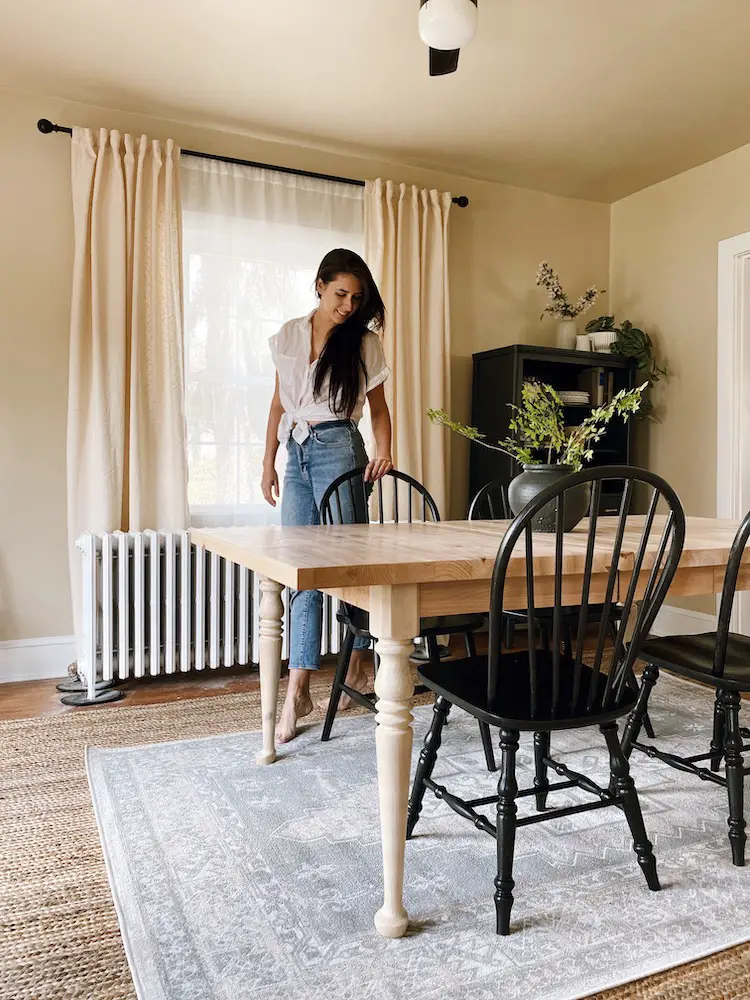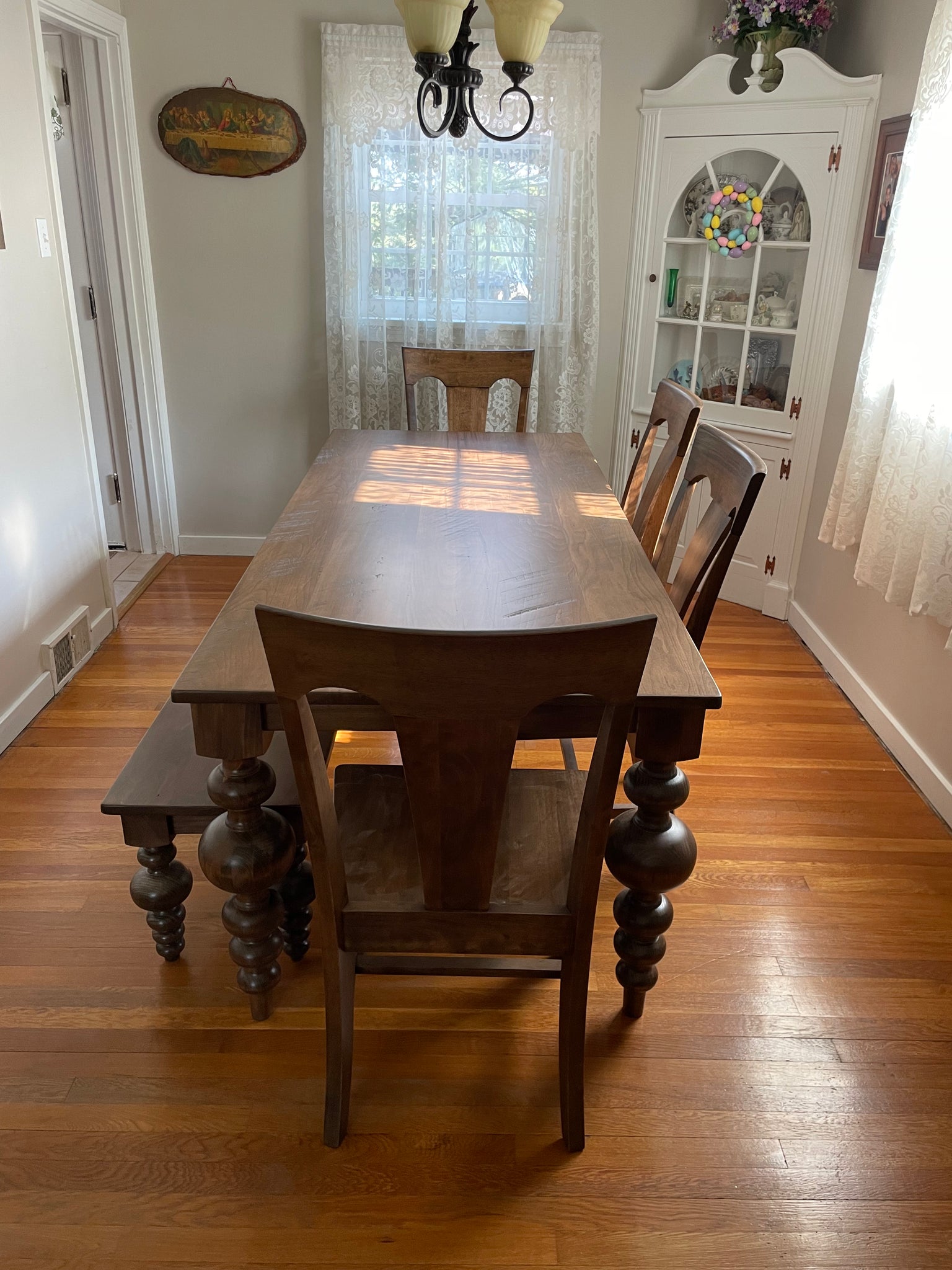The Ultimate Guide to Choose Resilient Dining Room Table Legs
The Ultimate Guide to Choose Resilient Dining Room Table Legs
Blog Article
Choosing the Perfect Table: What Styles Work Best for Your Home?
Selecting the excellent table for your home can be a nuanced procedure that stabilizes aesthetic appeals and functionality. Whether your room leans in the direction of typical beauty, contemporary minimalism, rustic beauty, or industrial posh, the range of styles available can provide to varied tastes. Each design offers unique benefits and difficulties that can either enhance or interrupt your eating area's harmony. Comprehending exactly how various products, shapes, and sizes interact with your existing style is essential. To browse these selections effectively and locate a table that truly complements your home, take into consideration the complying with aspects carefully.
Analyzing Your Area
Examining the measurements and format of your dining area is a critical primary step in picking the ideal table. Begin by gauging the length and width of the room, representing doorways, home windows, and various other building features that might influence table placement. This makes sure that your table not just fits but also permits comfy motion around it.
Take into consideration the number of people you typically captivate. A table should fit your household's daily needs while using enough adaptability for periodic visitors. Generally of thumb, assign at the very least 24 inches of table width each to make sure a comfy eating experience.
It's likewise important to maintain appropriate clearance around the table. Ideally, there should go to least 36 inches between the table side and wall surfaces or various other furnishings, enabling simple accessibility and movement. For spaces where chairs with arms or additional storage space systems like buffets are involved, increasing this clearance to 48 inches is suggested.
Lights and environment play significant duties. Make certain that your dining table aligns with existing illumination components or prepare for adequate illumination solutions. This comprehensive spatial evaluation assurances that your table not just fits physically however likewise integrates with your space's overall performance and visual.
Popular Table Styles

Conventional eating tables frequently include elaborate information, bent legs, and rich timber finishes, evoking a feeling of ageless sophistication. They are perfect for homes with timeless style or those seeking to include a touch of sophistication to their dining area.
Modern eating tables prioritize simpleness and clean lines, typically integrating products like glass and metal. These tables are perfect for contemporary rooms, offering a sleek and uncluttered appearance that matches minimalist layout viewpoints.
Rustic dining tables, on the various other hand, stress natural products and a handmade appearance - dining room table legs. They commonly feature redeemed timber and a distressed surface, creating a warm and welcoming ambience. These tables work well in farmhouse-style homes or those looking for a comfortable, organic feel
Industrial dining tables incorporate raw products such as steel and timber, frequently showcasing an utilitarian visual. This style is well-suited for lofts or urban spaces, adding a touch of sturdy charm and resilience to the dining experience.
Each style provides distinct benefits, making it important to choose one that lines up with your home's overall layout and your individual choices.
Material Options
When selecting a dining table, the option of material plays an important function in determining both the table's looks and functionality. Timber, metal, glass, and composite materials each offer special benefits and difficulties, making it critical to align the material with your home's decor and way of living needs.
Wood is a timeless and versatile alternative, available in selections such as oak, walnut, and mahogany. Known for its durability and heat, timber matches both traditional and contemporary interiors. It calls for normal upkeep to protect against scrapes and bending.
Metal tables, commonly crafted from stainless-steel, aluminum, or functioned iron, are praised for their modern-day appeal and robustness. They are particularly fit for industrial or minimalist setups yet can be susceptible to damages and may really feel cold to the touch.
Glass table bring an air of style and openness, perfect for smaller sized areas as they produce an illusion of even more space. While easy to clean, glass can be prone to spots and calls for careful handling to avoid chips and splits.
Composite materials, such as MDF and plywood, deal affordable and adjustable solutions, though they may lack the durability of all-natural materials. Choosing the appropriate material ensures your table is both a functional property and an aesthetic joy.
Sizes And Shape Factors To Consider
After identifying the appropriate material for your dining table, the next factor to consider is choosing the appropriate form and dimension to suit your space. The shape of the table substantially influences the space's visual and capability. Rectangle-shaped tables, the most typical shape, are optimal for bigger areas and can accommodate a higher number of guests. They additionally enable a more formal dining experience. On the other hand, rounded tables promote a sense of intimacy and are excellent for smaller sized dining locations, encouraging discussion by getting rid of corners and making every person really feel similarly included.
Size is equally vital and need to be determined by both the area's dimensions and the variety of individuals you his response intend to seat routinely. As a guideline of thumb, designate at the very least 24 inches browse this site of table size per individual to guarantee comfortable eating. In addition, consider the table's clearance space: there should go to the very least 36 inches between the table edge and the wall surfaces or other furnishings. This makes certain that diners can move about conveniently without feeling confined. Expanding tables supply adaptability if you often organize larger gatherings, giving added seating when required without occupying extra space daily. Choosing the best sizes and shape ensures both functionality and aesthetic consistency in your eating area.
Matching Your Decoration
Picking an eating table that harmonizes with your existing decor is essential in developing a natural and welcoming area. Begin by examining your current indoor design style, whether it be contemporary, traditional, rustic, or eclectic. The dining table ought to match the general aesthetic, not compete with it. A sleek, minimalist table with tidy lines is excellent for a modern home, while a vintage, ornate table matches an extra standard setting.
If your design features warm tones and all-natural products, consider a wooden table to boost the natural feel. Alternatively, a glass or steel table may be extra proper in an area controlled by great colors and commercial components.
Structure plays a crucial duty. A rough-hewn, reclaimed timber table can add personality to a rustic room, while a sleek marble surface area can elevate an elegant wikipedia reference eating area. Finally, take into consideration the scale and percentage of the table in regard to the room dimension and existing furniture. A well-matched table not just improves visual allure yet likewise improves the overall dining experience.

Final Thought
Choosing the perfect dining table necessitates careful factor to consider of area, design, products, shape, and size. Standard tables complement timeless insides with abundant wood surfaces, while modern-day tables match modern setups through glass and steel.
Report this page